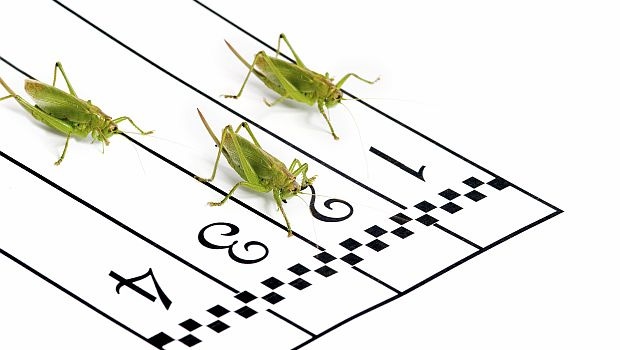Concerns in sports circles about various traditional protein sources, including sustainability, may have opened the door to insect protein powders for use in bars, beverages and other products.
March 16, 2015

This post was contributed by our guest blogger, Dave Slagle. He is a freelance writer and sports nutrition/natural products industry professional with more than 25 years of experience. Connect with him on Linkedin.
While most sports nutrition bloggers are debating the merits of 'grass fed' whey protein or evangelizing the latest hot product, a small corner of the internet has become infested with information on edible insects. And with the latest buzz of the 2015 U.S. dietary guidelines, (which call for a reduction in the amount of animal protein and an increase in healthful and environmentally friendly foods), athletes are looking for alternative protein sources. However, they are bombarded with warnings about the arsenic levels in brown rice, the mercury contamination of fish, the estrogenic properties of soy, the pesticides and purines in peas, the hormone enhancement of beef, chicken and pork. All of which leaves today's athletes searching for "clean" protein sources. Perhaps now is the perfect time for bug protein supplements.
Bug Protein is the Future!
Insects, algae and synthetic biology ("synbio") sources may make up over 50 percent of the alternative protein market by 2054, according to a recent report from Lux Research. But insects have always played an important role throughout the history of human nutrition. Even in the United States, where it's no secret that insects are the "hidden" ingredients in foods like catsup, peanut butter, and beer, (yes, beer)—the hops used in beer are infested with an 'acceptable' level of aphids, as the FDA allows for a certain amount of insects, considered natural and unavoidable defects, in foods. As a nutritional supplement, bug protein definitely has a future, but it may be a few years ahead of a mainstream American culture, in which the past generation has been raised on the belief that breakfast comes in a box and 'healthy snacks' are unwrapped and zapped.
It's one thing to convince a person to eat a bug; convincing an entire culture is a bigger challenge. However, sports nutrition offers a unique gateway to the edible insect industry. Athletes, have always been early adopters of trends in nutritional supplements. Creatine monohydrate, BCAA's, and whey protein were embraced by bodybuilders long before they became sports nutrition staples. And considering whey protein, the by-product of manufacturing cheese, was for many years thought of as a cheap- and nasty-tasting waste material, bug protein could begin trending heavily in sports nutrition (especially since bugs are truly Paleo).
During a recent conversation with buyers from leading sports nutrition retail chains, the topic of bug protein came up. When asked if they would add bug protein products to their shelves, the squeamishly unanimous response from this group was, "no comment." This is entirely due to their naive perception of edible insects, also known as the "yuck" factor. Just hearing the words “edible insects" is yucky to some people, yet may seem normal to others—at the night market in Pattaya, Thailand, eating crispy crickets, glazed grasshoppers and buckets of fried silkworms and washing them down with tepid, yet high-octane beverages is the norm and surely provides a nutrient combination more potent than any 'pre-workout' powder could provide. But American athletes still may not get past the "yuck factor" associated with eating bugs on purpose.
"Among all the various myths and half-truths in the world of nutrition, the notion that protein is essential for both athletes and the general population is perhaps the only thing everyone can agree on," said Greg Sewitz and Gabi Lewis, the cofounders of Exo Protein, the company that makes the already popular cricket flour based, Exo Protein Bars, who noted insects are high in complete protein, with all the essential amino acids, as well as essential fatty acids and micronutrients like iron, calcium and B-vitamins. “Crickets, for example, have more iron than beef and more calcium than milk gram for gram. There is already a complete amino acid profile, so no mixing or blending with other proteins is required. As for the flavor, pure protein powders are never particularly tasty—whether whey, soy, or bug—so some kind of flavoring might be desirable." They also assured the yuck factor is purely psychological, and dealing with it is simply a marketing and consumer perception challenge. "There's obviously a lot of education to be done but we're already getting buy-in from some top athletes and nutritionists," they said. “If we can generate enough demand to scale the farming and bring the costs down in line with soy, then there's really no limit to how big we can take this."
One of the top executives in the sports nutrition industry agreed: "Get past the yuck factor and you've got the most efficient protein; the whole bug is protein" said Eric Hillman, CEO of Europa Sports Products, one of the largest sports nutrition distributors. "Let's look at a functional fitness athlete. He needs protein and fat. Well, take a Grub Beetle: lots of fat and lots of protein. Can't say that about whey, can you?" Endgame: bug protein requires less processing and contains more nutrients.
"It's a highly natural, pure source of protein; supplements made with whey or soy proteins require considerably more processing," said Daniella Martin, author, entomophagist and host of the Girl Meets Bug cooking show. "Processing is incredibly simple compared to other animal or plant protein supplements. Crickets, for instance, would be frozen, toasted, and dried, then ground into flour. Unlike soy protein isolate, which has to be chemically separated, this is a straightforward process."
You may wonder where they get the insects, if the insects have been exposed to pesticides or if it is actually safe to eat them at all. Andrew Brentano, COO of insect supplier Tiny Farms, explained: "All insects that enter the food chain have to have been reared specifically for human consumption (i.e., they cannot be diverted from other uses like pet feed or fish bait, and they cannot be wild harvested). They need to be reared following the same best practices required of any other animal livestock to ensure wholesomeness and farmers must take measures to ensure that only healthy (bugs) are harvested for (human) consumption. Producers and manufacturers are on the hook to demonstrate the wholesomeness of their product, which involves lab testing for biological and chemical contaminants. The one obvious risk involves allergies. Insects are closely related to shellfish, and all insect products hitting the market are voluntarily labeled with a shellfish warning."
The fact that the insects are farm-raised and not just found under a rock may be enough to take away some of the "yuck factor". When asked which insects can be used for bug protein, Brentano replied, "In the near term, in the west, the main species that are being utilized for protein are crickets, grasshoppers, mealworms and silkworms. That is mainly because these are the species with a history of 'domestication' and existing expertise for rearing. As we move forward with assaying the breadth of edible species, we should expect to utilize a much broader range. We have particular interest in caterpillars, beetle grubs, and also branching out from insects to terrestrial crustaceans like pill bugs (armadillidiidae) and also other species like earthworms."
If bug protein still sounds "yucky" to you, consider this: Americans have adapted to eating sushi (raw fish); crab, lobster and shrimp (the insects of the sea); and other "yucky" animal products, including chicken embryos, (eggs) and bovine lactation (cow's milk). And don't forget the processed by-product of milk, whey. Not to mention the fact that practically all of the amino acid supplements that athletes love so much are derived from duck feathers or human hair. Considering all of that "yuckiness", it is clear that bug protein could find a place in the pantry. And with the ever-growing Crossfit craze of 'Paleo' diets, we may begin to see a multitude of bug protein supplements over the course of the next few years.
Check out how the nutritional content of various edible insects compares to lean ground beef and broiled fish.
You May Also Like




.png?width=800&auto=webp&quality=80&disable=upscale)